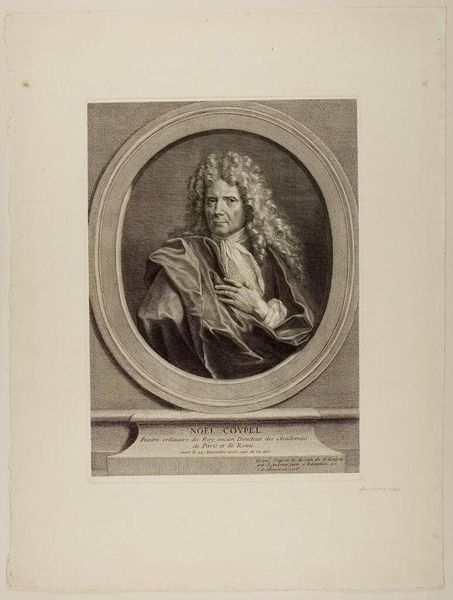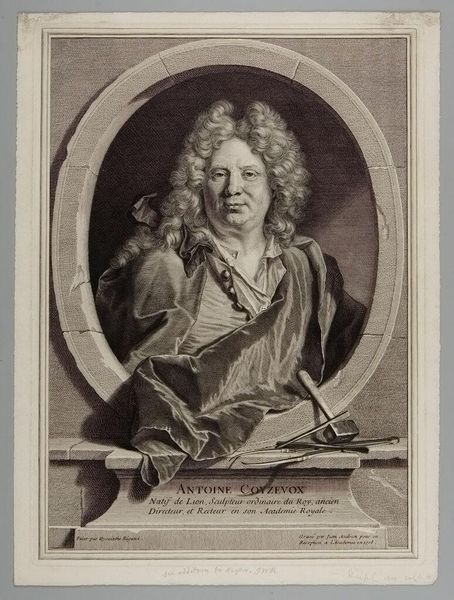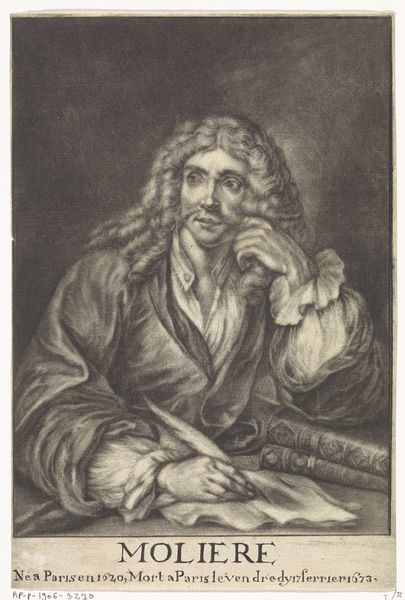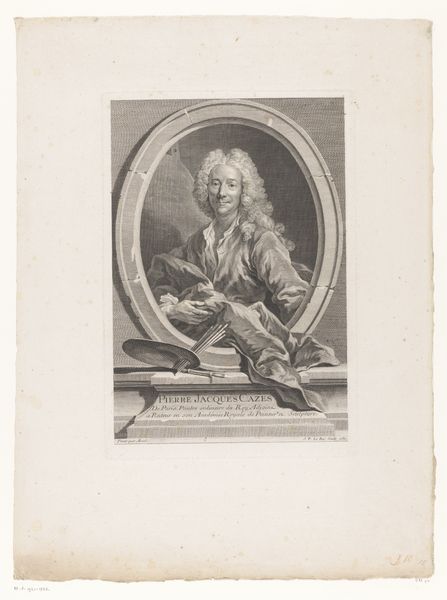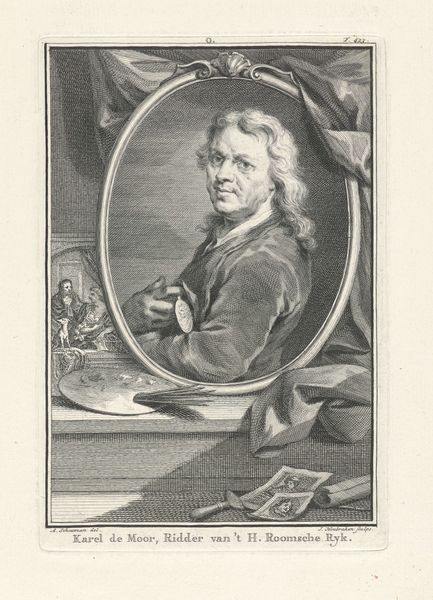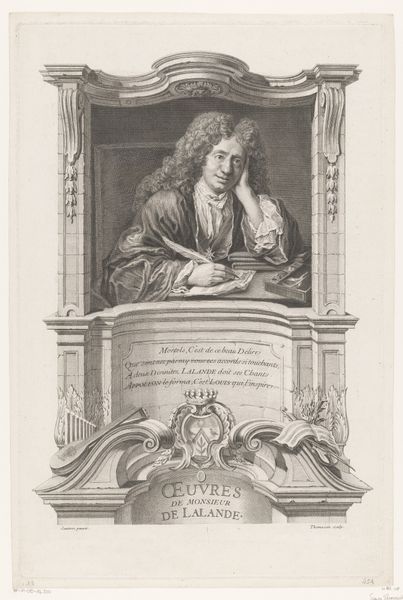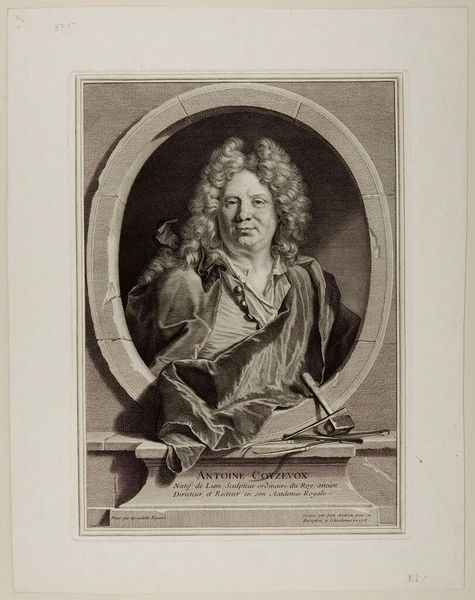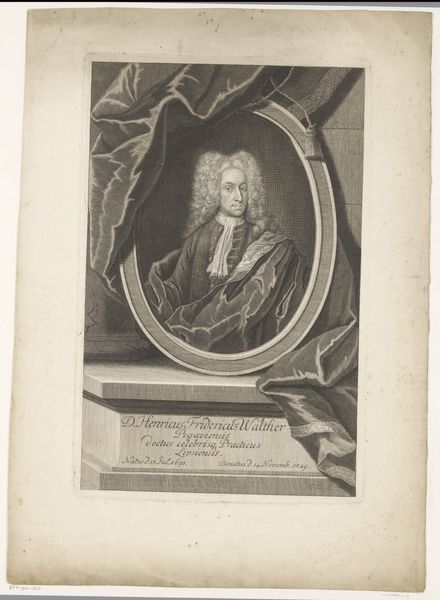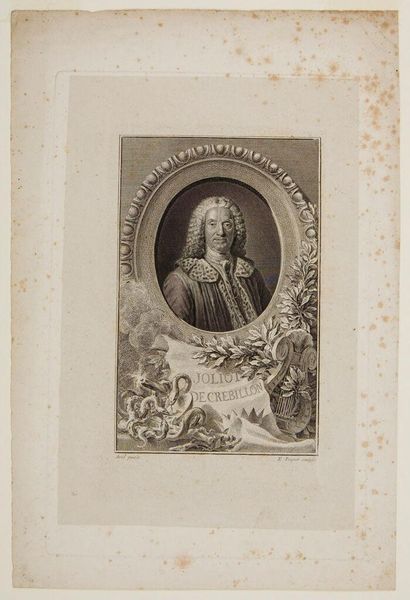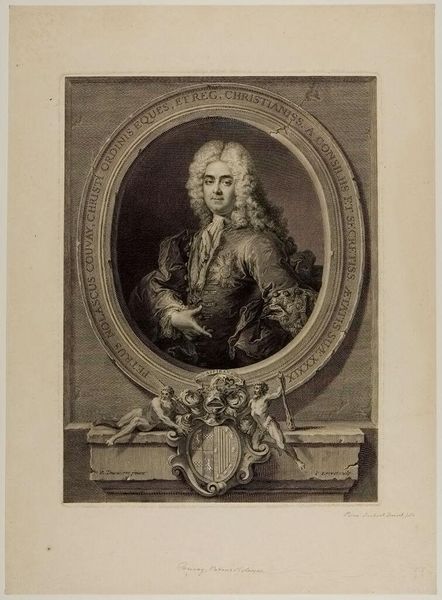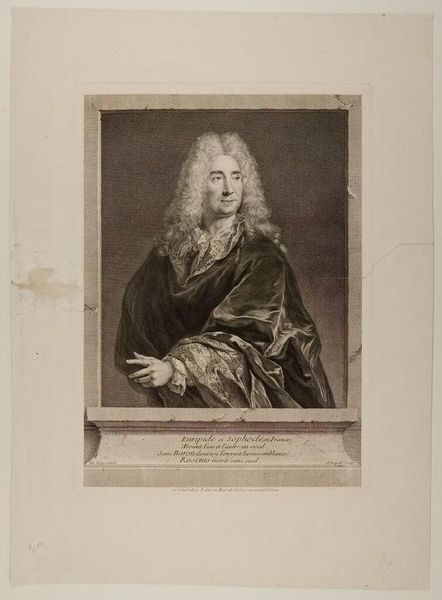
Poquelin de Molière c. 18th century
Dimensions: Image: 14.4 Ã 9.5 cm (5 11/16 Ã 3 3/4 in.) Sheet: 19 Ã 11.7 cm (7 1/2 Ã 4 5/8 in.)
Copyright: CC0 1.0
Editor: This is Étienne Ficquet’s print of Poquelin de Molière, and I find the dramatic masks at the bottom so striking. What can you tell me about how this portrait reflects Molière’s impact on society? Curator: The masks are vital. They signify the duality inherent in Molière’s work – comedy and tragedy intertwined, mirroring life itself. Ficquet's depiction highlights the tensions Molière navigated, using laughter to critique social norms and challenge power structures. Editor: So the portrait isn't just celebratory; it acknowledges the complexities of his satire? Curator: Exactly. Consider the historical context: Molière often faced censorship and controversy for his plays. Ficquet subtly acknowledges this, positioning Molière as a figure wrestling with societal expectations. Editor: That gives me a new perspective on the piece. Thanks! Curator: It's in understanding that struggle that we truly appreciate Molière's genius and Ficquet's insightful portrayal.
Comments
No comments
Be the first to comment and join the conversation on the ultimate creative platform.
